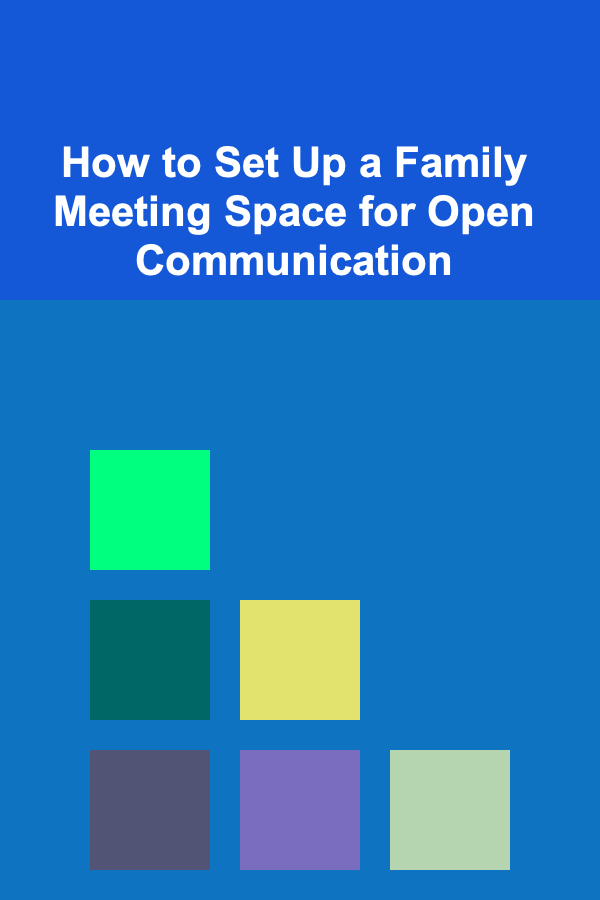
How To Grasp the Principles of Distributed Autonomous Organizations (DAOs)
ebook include PDF & Audio bundle (Micro Guide)
$12.99$11.99
Limited Time Offer! Order within the next:

The concept of Distributed Autonomous Organizations (DAOs) has gained significant attention in the world of blockchain technology and decentralized systems. As more industries explore decentralized governance models, understanding the principles behind DAOs is essential for anyone looking to engage with the growing ecosystem. This article delves deeply into the core principles of DAOs, how they operate, and their potential for transforming traditional organizational structures.
Introduction to DAOs
A Distributed Autonomous Organization (DAO) is an organization that operates through smart contracts and is governed by a community, without a central authority. DAOs leverage blockchain technology to execute decisions in a transparent and decentralized manner. Unlike traditional organizations, which are managed by a board of directors or an executive team, DAOs operate by enabling stakeholders to vote on proposals and make decisions collectively.
At their core, DAOs represent a paradigm shift in organizational design. They are autonomous in the sense that once they are set up and deployed, they operate without requiring intermediaries or centralized control. The participants in a DAO are typically token holders who use their tokens to vote on proposals that shape the direction of the organization.
Key Principles of DAOs
To fully grasp how DAOs work, it is important to understand the fundamental principles that underpin these organizations. Below are the core principles of DAOs:
1. Decentralization
The most fundamental principle of a DAO is decentralization. Unlike traditional organizations, where decisions are made by a centralized group (such as a board of directors or CEO), a DAO distributes decision-making authority across all participants. This ensures that no single entity has control over the organization's decisions, and all stakeholders have an equal opportunity to influence the direction of the DAO.
Decentralization is facilitated through the use of blockchain technology. Blockchain provides a transparent, immutable, and tamper-proof ledger that records all transactions, including decisions made by DAO members. This ensures that the process is open, transparent, and auditable by anyone who has access to the blockchain.
2. Autonomy
Once a DAO is launched, it is designed to operate autonomously, meaning it can function without needing constant human intervention. Smart contracts are at the heart of this autonomy. A smart contract is a self-executing contract with the terms of the agreement directly written into lines of code. These contracts automatically execute when predefined conditions are met, eliminating the need for intermediaries or central authorities.
Autonomy in a DAO also means that it can continue to operate even if the original creators or administrators are no longer involved. The rules, governance models, and decision-making processes are encoded into the DAO's smart contracts, ensuring the organization runs as intended without direct oversight.
3. Transparency
Transparency is a key principle of DAOs. Since DAOs are built on blockchain technology, every action, transaction, and decision is publicly recorded on the blockchain. This ensures that all members and stakeholders have access to the same information, which fosters trust and accountability.
Transparency in DAOs goes beyond the mere visibility of transactions. It also refers to the open nature of decision-making. Proposals, votes, and outcomes are visible to all participants, allowing for greater participation and reducing the potential for corruption or manipulation.
4. Tokenization
DAOs often use tokens as a mechanism for governance. These tokens are typically issued during the DAO's creation and are used to represent ownership or voting power within the organization. Token holders can propose changes to the DAO, vote on proposals, or make decisions about the direction of the organization.
Tokenization is essential because it allows DAOs to create a system of incentives for participants. Token holders are motivated to participate in governance because their tokens may increase in value as the DAO grows and succeeds. Additionally, the use of tokens helps align the interests of the participants with the success of the organization.
5. Collective Decision-Making
In a traditional organization, decision-making power is usually concentrated in the hands of a few individuals, such as executives or shareholders. In contrast, DAOs are built on the principle of collective decision-making. All token holders have the ability to participate in decision-making processes, either by proposing changes or voting on existing proposals.
Decisions in a DAO are typically made through a process called governance voting. This can take many forms, such as a simple majority vote or a more complex system that weights votes based on the number of tokens a participant holds. The goal of this collective decision-making is to ensure that all stakeholders have a voice and that the DAO operates according to the collective will of its members.
6. Incentivization
DAOs often include built-in incentive mechanisms to encourage participation and engagement from their members. These incentives can take many forms, such as rewards for voting on proposals, earning tokens for contributing to the organization, or receiving a portion of the organization's profits.
The concept of incentivization is critical for the sustainability of DAOs. By offering rewards for active participation, DAOs ensure that their members are motivated to contribute to the organization's success. Additionally, incentive mechanisms help align the interests of individual participants with the long-term goals of the DAO.
The Structure of DAOs
While the principles of DAOs are relatively straightforward, their structure can vary significantly depending on the specific use case and the design of the DAO. Below are some common structural components of DAOs:
1. Smart Contracts
Smart contracts form the backbone of a DAO. They are automated and self-executing programs that encode the rules of the DAO, such as voting mechanisms, proposal submissions, and financial transactions. Smart contracts enable the DAO to function autonomously, without the need for intermediaries.
The beauty of smart contracts is that they are tamper-proof and enforceable by the blockchain. Once a smart contract is deployed on a blockchain, it cannot be altered, which provides a high level of security and trust.
2. Token Governance
As mentioned earlier, token governance is a critical component of DAOs. Token holders typically have voting rights that allow them to propose and vote on decisions regarding the direction of the organization. The more tokens a participant holds, the greater their voting power.
Token governance can be implemented in different ways. For example, some DAOs use a simple majority vote, while others may implement more complex mechanisms such as quadratic voting or reputation-based voting. Each DAO can design its own system based on the needs of the community.
3. Decentralized Identity
In many DAOs, participants are required to use decentralized identities (DIDs) to authenticate themselves and interact with the organization. DIDs are digital identifiers that are stored on the blockchain, providing a secure and verifiable way for individuals to prove their identity without relying on a central authority.
Decentralized identities help ensure that participants in a DAO are who they claim to be, and they contribute to the security and integrity of the organization.
4. Treasury Management
DAOs often manage a treasury that holds funds to support the organization's operations and initiatives. The treasury is typically controlled by the token holders, who can vote on how the funds are allocated. Proposals for spending funds may include paying for development costs, marketing efforts, or funding new projects within the DAO.
Treasury management is a key responsibility for DAO members. Since the funds are controlled by the community, members must ensure that financial decisions are made transparently and in the best interest of the organization.
Advantages of DAOs
DAOs offer several advantages over traditional organizations, particularly in terms of transparency, decentralization, and efficiency. Here are some of the key benefits:
1. Increased Transparency
Because all actions and decisions in a DAO are recorded on the blockchain, there is a high level of transparency. Every participant has access to the same information, ensuring that all decisions are made openly and honestly.
2. Decentralized Governance
DAOs provide a decentralized model of governance, where power is distributed among all members. This eliminates the potential for corruption or centralized control, allowing decisions to reflect the collective will of the participants.
3. Lower Costs
By eliminating intermediaries and automating many processes through smart contracts, DAOs can reduce operational costs. This makes them more efficient and cost-effective compared to traditional organizations.
4. Increased Participation
DAOs provide a platform for increased participation from stakeholders. Since token holders have a say in the direction of the organization, DAOs foster a more democratic and inclusive environment.
5. Global Access
DAOs are inherently borderless, as they are built on blockchain technology. Anyone with an internet connection can participate in a DAO, regardless of their location. This opens up opportunities for people all over the world to engage with decentralized projects.
Challenges of DAOs
While DAOs present numerous advantages, they also come with their own set of challenges:
1. Security Risks
Smart contracts, while secure, can still be vulnerable to exploits and bugs. If there are vulnerabilities in the code, malicious actors could take advantage of them to manipulate the DAO or steal funds.
2. Scalability Issues
As DAOs grow, they may face challenges in scaling their governance models. With a large number of participants, it can become difficult to make decisions quickly or efficiently.
3. Legal and Regulatory Uncertainty
The legal status of DAOs is still uncertain in many jurisdictions. Since DAOs operate outside the traditional legal frameworks, there may be challenges regarding their compliance with local laws and regulations.
4. Voter Apathy
In some DAOs, there may be issues with voter participation. Not all token holders will actively engage in governance, which can lead to decisions being made by a small group of participants. This undermines the democratic nature of the organization.
Conclusion
Distributed Autonomous Organizations represent a radical shift in how organizations are structured and governed. By leveraging blockchain technology, DAOs enable decentralized, transparent, and autonomous decision-making processes. While DAOs offer numerous advantages, including increased transparency, reduced costs, and greater participation, they also face challenges such as security risks, scalability issues, and legal uncertainties.
As blockchain technology continues to evolve, DAOs will likely become an increasingly important part of the decentralized ecosystem. Understanding the principles and mechanics of DAOs is essential for anyone looking to engage with this emerging paradigm. By grasping these principles, participants can contribute to the development of DAOs and help shape the future of decentralized governance.
Reading More From Our Other Websites
- [Home Space Saving 101] How to Organize a Tiny Kitchen for Maximum Efficiency
- [Organization Tip 101] How to Create an Organized Laundry Room That Works for You
- [Organization Tip 101] How to Organize a Charity Craft Fair
- [Home Holiday Decoration 101] How to Mix Modern and Traditional Holiday Decorations Seamlessly
- [Home Family Activity 101] How to Host a Family Art Show with Homemade Creations
- [Home Rental Property 101] How to Automate Your Rental Property Management
- [Small Business 101] Best Small Business Growth Hacks: Scaling Your Startup Without Breaking the Bank
- [Home Renovating 101] How to Install Flooring: Tips for a Smooth and Durable Finish
- [Home Soundproofing 101] How to Soundproof Your Home from External Traffic Noise
- [Beachcombing Tip 101] The Ultimate Guide to Preserving and Displaying Coastal Collectibles

Creative Thrifty Party Planning Tips for Any Occasion
Read More
How to Plan for Travel During Busy Seasonal Times
Read More
How to Set Up a Family Meeting Space for Open Communication
Read More
How to Develop a Personal Brand as a Corporate Communications Director
Read More
How to Plan a Wedding on a Budget: A Practical Checklist
Read More
10 Tips for Solo Bus Travel: Safety and Enjoyment
Read MoreOther Products

Creative Thrifty Party Planning Tips for Any Occasion
Read More
How to Plan for Travel During Busy Seasonal Times
Read More
How to Set Up a Family Meeting Space for Open Communication
Read More
How to Develop a Personal Brand as a Corporate Communications Director
Read More
How to Plan a Wedding on a Budget: A Practical Checklist
Read More